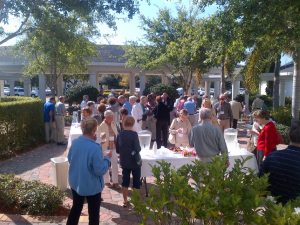 Most people have limited experience visiting churches. Until a few years ago I was part of this group.
Most people have limited experience visiting churches. Until a few years ago I was part of this group.
50+ First Time Experiences
Over the last three years, I’ve been a first time visitor in more than 50 Christian churches in the Dallas-Fort Worth metropolitan area. The three reasons I’ve made so many visits are
- Relocating to Texas from Florida in 2015 – 36 churches as part of a search for a church
- Relocating within DFW (moving nearly 50 miles) – 13 churches as part of my current search for a church
- Visiting to provide feedback on the first time visitor experience – 8 churches
Friendliness
Almost every congregation describes itself as friendly yet I would describe only about a third of the congregations I’ve visited as friendly. The friendly church experiences varied widely. In some smaller congregations it was clear everyone was glad to have a newcomer and excited to welcome and get to know me. In many cases multiple people were intentional about greeting me before, during and after the service simply because they didn’t yet know me.
In most congregations from the majority group that I would not characterize as friendly my presence seemed to be more of a burden than a blessing. In smaller congregations the welcome came only from the clergy person and/or one key leader clearly designated to do this work. In most larger congregations it was as if I was invisible. I was only spoken to by someone at the door on entering (usually as they handed me a bulletin) and/or by someone seated very near me during a greeting or passing of the peace time in the service. When I lingered after worship for a bit in the sanctuary or during a social gathering it was easy for me to see those who were part of in groups who readily connected, and also to note that none of these groups was intentional about noticing much less including newcomers or other outsiders.
(For more on other important factors people use when choosing a church read Choosing a Church – New Research).
Follow Up
 Unfortunately I didn’t count the number of churches that asked for my contact information. I would estimate that around 80% had some form of invitation for all who were present to record their presence on a register that was passed down the pew (or row of chairs) or to drop a card in the offering plate. These techniques were relatively weak calls to action for me as a newcomer.
Unfortunately I didn’t count the number of churches that asked for my contact information. I would estimate that around 80% had some form of invitation for all who were present to record their presence on a register that was passed down the pew (or row of chairs) or to drop a card in the offering plate. These techniques were relatively weak calls to action for me as a newcomer.
And, for those using pew pads this weak call to action grew weaker yet as the vast majority of those who registered before me did so by writing their names and checking a box indicating that they were members. Rather than writing in my name, address, phone number, e-mail and other information and checking the visitor box this led me to mirror their level of information sharing (the exception to this response was in congregations where I was honestly curious to see how they would use the information I provided or if they would ever follow up at all).
Without my contact information, it was impossible for a congregation to do any follow up with me.
So What?
Friendliness is a part of your congregational culture. It is possible for members and long-time participants to be friendly to each other while not extending the same hospitality to newcomers. Based on my own experiences as a pastor and a frequent church visitor the best way for a congregation to know how new members experience their friendliness as well as the many other important aspects of the first time experience is to engage someone to visit anonymously and provide detailed feedback about their experience. Of course, such an exercise is only of value if the church leadership intends to use it to help identify and act on areas for improvement.
Follow up is something that is handled far better in Evangelical congregations than in Mainline congregations. Mainliners and other progressive Christians must prioritize visitor follow up noting that such work begins by taking a much more intentional and personalized approach to gathering contact information from first time visitors. I was reminded of the importance of this work this week while reading Tracy Barnowe’s new book Grow Your Church: Overcome the Biggest Obstacle to Church Growth and Get 85% of Your First Time Visitors to Return (Apocryphile, 2018).
- How friendly is your church to those who already are a part of the life of your congregation? to newcomers?
- When is the last time your congregation invited someone (or several someones) to visit anonymously in order to provide helpful feedback about the lived experience of first time visitors?
- How does your congregation identify and gather contact information from first time visitors? What type of contact is made? How quickly? By whom?